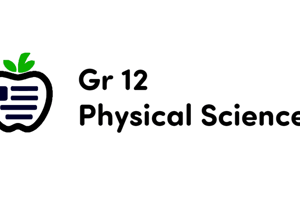Podcast
Questions and Answers
Why do apples fall vertically downwards instead of at an angle?
Why do apples fall vertically downwards instead of at an angle?
Apples fall vertically because the gravitational force acts towards the center of the Earth, which is the direction of vertical for the apple on the tree.
What conclusion did Newton draw from observing an apple fall from a tree?
What conclusion did Newton draw from observing an apple fall from a tree?
Newton concluded that the Earth attracts the apple towards itself, causing it to fall vertically downward.
How did Newton's thoughts extend to objects at greater heights like the Moon?
How did Newton's thoughts extend to objects at greater heights like the Moon?
Newton wondered if the gravitational force also acts on objects at greater heights, such as the Moon, and even farther like the planets and the Sun.
What does the stone tied to a string demonstrate regarding force and motion?
What does the stone tied to a string demonstrate regarding force and motion?
Explain the significance of the direction of gravitational force for objects on Earth.
Explain the significance of the direction of gravitational force for objects on Earth.
What role does gravity play in the motion of planets and celestial bodies?
What role does gravity play in the motion of planets and celestial bodies?
What is escape velocity in the context of gravitational force?
What is escape velocity in the context of gravitational force?
What are Kepler's laws and how do they relate to gravitation?
What are Kepler's laws and how do they relate to gravitation?
What is the direction of the centripetal force acting on an object moving in a circular path?
What is the direction of the centripetal force acting on an object moving in a circular path?
How can you stop the centripetal force from acting on an object like a stone tied to a string?
How can you stop the centripetal force from acting on an object like a stone tied to a string?
What happens to the stone when the string is released?
What happens to the stone when the string is released?
What does the term 'centripetal' imply regarding the force acting on an object in circular motion?
What does the term 'centripetal' imply regarding the force acting on an object in circular motion?
Does the Moon experience a force as it orbits the Earth? If so, in what direction does this force act?
Does the Moon experience a force as it orbits the Earth? If so, in what direction does this force act?
What might happen to the Moon if the centripetal force acting on it were to suddenly cease?
What might happen to the Moon if the centripetal force acting on it were to suddenly cease?
Do other planets in the solar system also revolve around the Sun in a similar manner as the Moon orbits the Earth?
Do other planets in the solar system also revolve around the Sun in a similar manner as the Moon orbits the Earth?
What is the significance of Newton's contributions to the study of forces and motion?
What is the significance of Newton's contributions to the study of forces and motion?
Flashcards are hidden until you start studying
Study Notes
Discovery of Gravitation
- Sir Isaac Newton discovered gravitation, inspired by observing an apple fall from a tree.
- He questioned why apples fall straight down rather than at an angle, leading to the understanding of the Earth's attraction.
- The force of gravitation acts vertically downwards towards the Earth's center.
Gravitational Force
- The gravitational force affects objects at different heights from the Earth, including the moon, planets, and the sun.
- The attractive force of gravitation is a universal phenomenon impacting all celestial bodies.
Circular Motion and Centripetal Force
- A force is necessary to change an object's speed or direction of motion, demonstrated by a stone tied to a string moving in a circle.
- This force, directed towards the center of the circle, is known as centripetal force.
- If the string is released, the stone will move in a straight line tangent to the circle due to its velocity.
Newton's Contributions Beyond Gravitation
- Newton made significant contributions in various fields including light, heat, sound, and mathematics.
- He invented calculus, a new branch of mathematics with extensive applications in physics.
- Constructed the first reflecting telescope, enhancing astronomical observations.
Lunar Motion and Forces
- The moon orbits the Earth in a defined path, with its direction and speed changing continuously.
- This motion suggests a force is perpetually acting on the moon, essential for maintaining its orbit.
- Other celestial bodies, like planets, also experience similar forces that keep them in orbit around the sun.
Importance of Gravitational Studies
- Understanding gravitation is critical to comprehending the relationships and movements of objects in space.
- It lays the groundwork for studying orbital mechanics, planetary motion, and the behavior of various astronomical bodies.
Studying That Suits You
Use AI to generate personalized quizzes and flashcards to suit your learning preferences.




